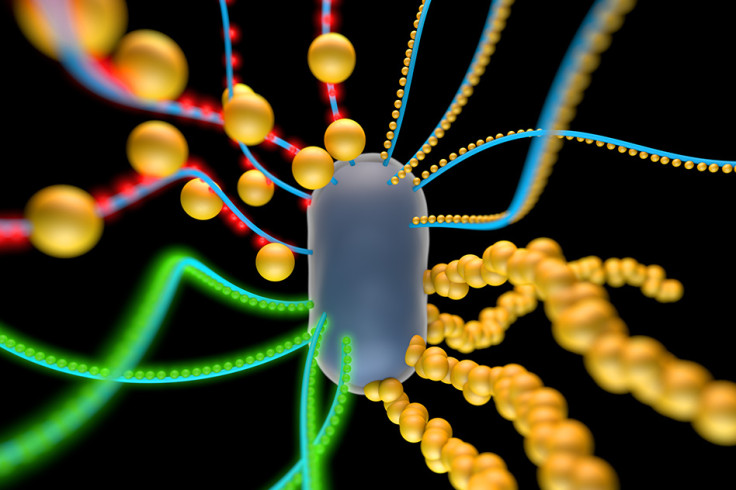It's Alive: MIT Engineers Use E. Coli Bacteria to Create Self-Repairing Materials

MIT engineers have created a new smart "living" material out of non-living things combined with E. coli bacteria. The synthesised material, which can repair itself, could be immensely useful if put into solar panels and biosensors.
Their research paper, entitled "Synthesis and patterning of tunable multiscale materials with engineered cells", appears in the 23 March edition of the Nature Materials journal.
E. coli naturally produces a thin layer of cells known as a biofilm, which contain "curli fiber" proteins that help the bacteria to stick to surfaces.
Inspired by the properties of bone, which is formed by living cells, minerals and other substances bonding together, the team of engineers coaxed the E. coli bacteria cells to capture inorganic gold nanoparticles and incorporate them into its structure.
By capturing the gold nanoparticles, the bacteria-based material became conducive to electricity, which means it could be used in solar panels on roofs to conduct and store electricity, or in advanced computers and biosensors in the future.
The material would also be able to repair any damage or tears by itself.
"Our idea is to put the living and the non-living worlds together to make hybrid materials that have living cells in them and are functional," said Timothy Lu, an assistant professor of electrical engineering and biological engineering, who led the team.
"It's an interesting way of thinking about materials synthesis, which is very different from what people do now, which is usually a top-down approach."
Further tests by the team found that they could even persuade the E. coli bacteria to interact with other bacteria and with more than one inorganic material, meaning that E. coli was able to weave a material that consisted of gold nanoparticles and quantum dots (semiconductor crystals) together.
"It's a really simple system but what happens over time is you get curli that's increasingly labelled by gold particles. It shows that indeed you can make cells that talk to each other and they can change the composition of the material over time," said Lu.
"Ultimately, we hope to emulate how natural systems, like bone, form. No one tells bone what to do, but it generates a material in response to environmental signals."
© Copyright IBTimes 2025. All rights reserved.






















